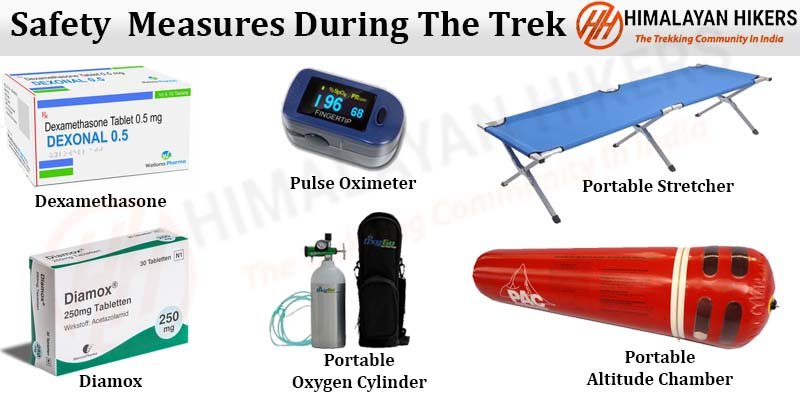
Safe Trekking Tips for Trekkers
Safe Trekking Tips, Trekking is fun but also risky at the same time, mishaps can occur anytime but it is up to us how we reduce the chances by taking the right safety measures.
Make Your Treks Safe and Better Using Safe Trekking Tips
Here, I am going to share some Safe Trekking Tips –
First, Choose the Organisation Wisely
Before going on a trek, you should have proper answers to these questions-
- Are they experienced? What is their credibility? What do others say about them?
- Are the trek leaders skilled and qualified? What safety do they provide?
- Is their itinerary good enough for you? How would they handle any emergency situation?
It is very important to ask all these questions before you choose the organization.
Common mistake trekkers commit
They prefer to go with local guides because they think, the local guides know better. But, it’s just an assumption!
Yes, they know the mountain trails but not every one of them is trained to tackle the emergencies. Only a few of them are reliable but it’s better to prepare yourself.
Also Read about – Safety Tips For Safe Trekking
How to stay safe?
Choose organizations wisely and trek leaders play a great role in this. In case of any emergency situation, they would be the ones helping you and saving your life.
Also, read about – What we do during an emergency breakout in the Trekking?
Every time, completing a Trek at any cost is not important
The truth is, there are certain risks in the mountains on every trek which includes heavy snowfall, mini avalanche, landslides, avalanche, rockfall, etc.
But it is your decision to choose the extent of risk you want to take. If there is danger ahead then safely returning is the best option. And, if you take the decision of completing your trek at any cost then it is only being foolish.
The trials can be made anytime but risking your life just because you want to complete the trek is not OK. Always remember, there is nothing more important than your life.
Are You Fit Enough? Use our Safe Trekking Tips
Category 1
Some trekkers go on a trek with no preparation at all and they are the ones facing problems.
Category 2
Then there are trekkers who struggle in completing the trek but make it to the summit. (Most of the trekkers come in the second category.)
Category 3
In this category are those trekkers who are fit and enjoy the trek to the fullest. Their body allows them to observe the stunning nature and be at peace.
Category 4
Very few trekkers come in this category. They are perfectly fit to handle bad weather conditions and trek in them through snow and rain.
Mistake’s which trekkers commit
They choose hard treks that are tougher than their capability and then face problems. Problems may also arise in the easier treks too but your good fitness level will help you overcome them.
Examine carefully in which category you fit in and then try to enhance the fitness and choose right treks according to the capability.
Some easy treks are –
You are Main and Have Major Roles to Play on Your Trek
Choosing an organization or a guide and totally depending on them is not wise. You are the main person of your trek and there are major roles to play. What if any emergency arises or you get lost? Who is going to help you then? Remember, then you have to help yourself!
So you should know – where the trek is located and what type of trail is there? How high is the altitude? How to help yourself, if there are AMS (Altitude Motion Sickness) symptoms?
Are you carrying the required medicines? How will you leave to the closest road head? It is very hard to know everything but put some effort to learn and understand the basics. This will surely help you in being safe on a trek.
Also, read about – How To Choose a good Trekking Company?
Check Your Safety Equipment
Safety equipment plays a great role in making your treks safe and they can be a life savior. Basic equipment is – Gaiters, crampons, ice axe, ropes oxygen cylinders, etc.
But many organizations neglect their use which is very disheartening. These basic things should be carried out to avoid risks. The team “Himalayan Hikers” keep a proper focus on the safety equipment and provides safety measures for all their trekkers.
Also, read about – what things to carry on a trek?
I hope, you all read the article thoroughly and will surely follow these safety steps for better and safe treks.


